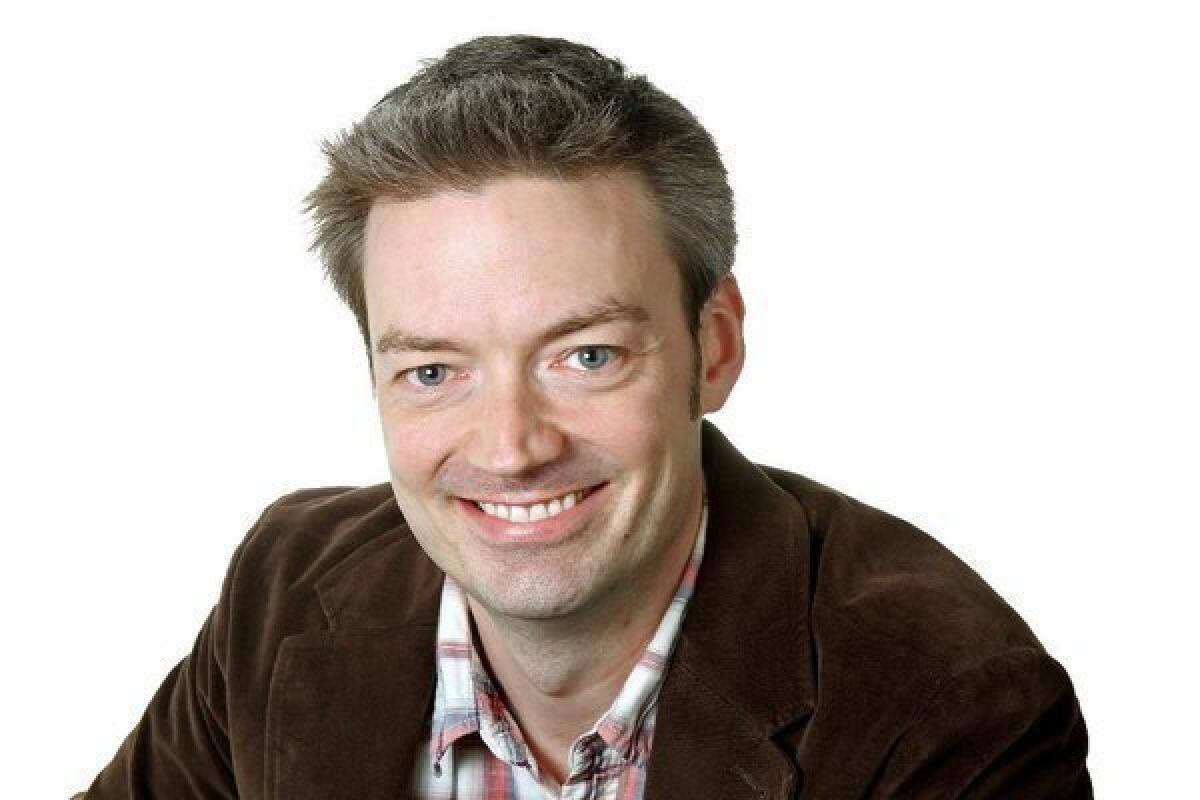Burb’s Eye View: UFOs are nothing alien to this author

- Share via
In Burbank, there are UFOs and then there are UFOs.
The first kind exists in sound stages and on computer screens before it hits silver screens. The second kind was created in the last century at Lockheed’s former top-secret research facility in Burbank called the Skunk Works.
Once developed in Burbank, top-secret planes such as the A-12 would be disassembled and sent in pieces to the top-secret flight test facility at Groom Lake in Nevada.
Or Area 51, as it’s most commonly known.
“The secret hangars of Burbank were the gateway to Area 51,” said Bill Yenne, author of “Area 51 – Black Jets.”
Yenne will visit the Buena Vista Branch Library in Burbank next week for a discussion about his book and the role Lockheed’s Burbank facility played in aviation history.
Reference librarian Hubert Kozak invited Yenne after reading the book, which was published earlier this year. Page after page of Burbank’s aviation history unfolded as the story of Area 51’s secretive beginnings uncoiled.
“It’s a paradox — the pinnacle of technology knowledge and development and it’s both on display at Area 51 and it’s not,” Kozak said.
Beginning in 1943, Lockheed’s Skunk Works gave the world the P-80 jet fighter, several CIA spy planes, the SR-71 Mach 3 Blackbird, and many others before it relocated to Palmdale in 1989. Engineer and designer Clarence Leonard “Kelly” Johnson was responsible for many of these innovations, and in 1955, he selected Groom Lake as the test site for his newest project at that time, the U-2 spy plane.
For years, the site existed solely as a testing area for aeronautic technology. It still does — the no-fly zone above the area is roughly the size of New England, Yenne said.
In the 1980s, Area 51 took on mythical status when a self-described engineer named Bob Lazar went public with stories of extra-terrestrial aircraft that were housed at the facility, along with their alien pilots.
“There’s something fascinating about the idea of Area 51, this conundrum of mixed metaphors that surround the place,” Yenne said. “It’s got this cloak of mystery around it because it officially doesn’t exist.”
That mystery drew Kozak to Yenne’s book in the first place. It further interested him because his father was a mechanical design engineer who worked at both Lockheed and Northrup Grumman.
“He died a couple years ago now. I wish I’d talked to him more about the projects he’d worked on — I’m pretty proud of his involvement [with the defense of this country],” Kozak said.
Kozak has already been contacted by former Lockheed employees who plan to attend the presentation. He expects a vibrant discussion about the history of the Skunk Works and the many classified and de-classified projects that fuel the legend of Area 51.
Yenne also expects to meet the true experts of the “UFOs” of Groom Lake.
“I will mention right away: There will be people that will know more than I about individual programs,” Yenne said. “I just want to convey how these things contributed to the mythology.”
Part of the mythology is owed to the U.S. government’s handling of Area 51. The first official designation of Area 51 came in 2013, when the government released a less-redacted version of the CIA’s official history of the Aquatone and Oxcart spy-plane programs, Yenne writes.
While still denying its existence, the government keeps close watch on Area 51. On his own visit, Yenne encountered several signs ordering no photography of the barren desert landscape near the Groom Lake site, which can be easily found on a Google map.
“You’re being told officially not to photograph something that officially doesn’t exist,” Yenne said.
Yenne’s talk will officially take place at 7 p.m. Tuesday the Buena Vista Branch Library, 300 N. Buena Vista St.
For more information, call (818) 238-5620.
--
BRYAN MAHONEY writes about Burbank neighbors and the place they call home. He can be reached at 818NewGuy@gmail.com and on Twitter at @818NewGuy.